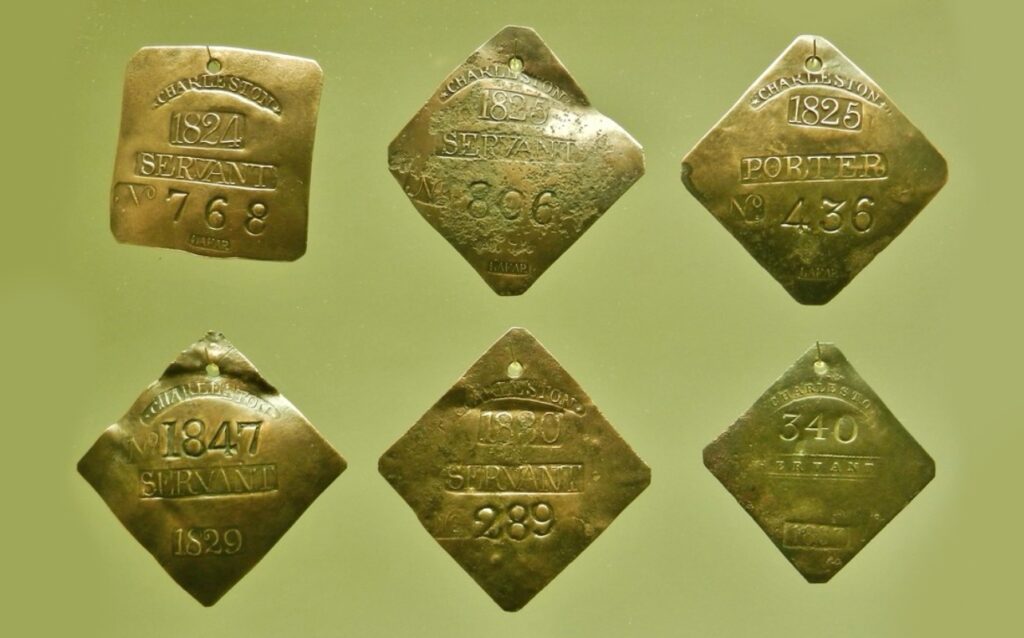The National Museum Of African American History And Culture Acquires Charleston Slave Badges For Searchable Exhibit

The Smithsonian’s National Museum of African American History and Culture will display the largest and most complete set of historic Charleston Slave Badges available through an online search.
The collection features 146 rare badges dating back to 1804, including those with makers’ marks and two with personalized inscriptions, The Smithsonian reports. To share the badges and their history with a large global audience, the museum has launched a Searchable Museum feature at SearchableMuseum.com/SlaveBadges which details the historical significance of Charleston Slave Badges and the museum’s recent acquisition.
“We are honored to share the story of enslaved African Americans who contributed to building the nation,” Mary Elliott, NMAAHC museum curator, said.
“It is a story that involves the juxtaposition of profit and power versus the human cost,” Elliott added. “The story sheds light on human suffering and the power of the human spirit of skilled craftspeople who held onto their humanity and survived the system of slavery, leaving their mark on the landscape in more ways than one.”
The digital exhibit allows visitors to interact with the artifacts and explore the legislated system of leased enslaved labor in Charleston, South Carolina. It highlights those who benefited from this system and explores how enslaved African Americans navigated slavery using their abilities, skills, and intelligence. The new Searchable Museum feature also offers insights into collecting, archaeology, vocational training, and the concept of freedom beyond detailing the history of Charleston Slave Badges.
Established in Charleston in 1783, the Charleston Slave Badge system was used as a form of control and profit. Enslaved African Americans leased out by their owners were required to wear registered badges identifying their occupation, whether as skilled craftsmen or servants.
This system imposed strict surveillance and limited their self-government within the city while working. Today, these badges serve as reminders of the enslaved people’s skills and contributions to building the city of Charleston.
It was a legal system between enslavers and city government where slave owners paid a registration fee to the city for each enslaved person whose labor they leased out. In return, the city issued badges, most often made of copper, that identified these leased laborers. Enslavers profited from leasing the skills of African Americans, while the city benefited economically and from the skilled labor that helped shape Charleston’s urban development.
Those wearing the badges had some freedom to move about the city while working, allowing them to interact with a broader network of enslaved Black individuals. In certain cases, they also retained portions of their earnings and could use the funds to secure freedom for themselves and their families.
The collection was compiled by Harry S. Hutchins Jr., a renowned collector who worked with co-authors Brian E. Hutchins and historian Harlan Greene to write and publish the book, Slave Badges and the Slave Hire System in Charleston, South Carolina, 1783–1865.
“Partial Gift of Harry S. Hutchins, Jr. DDS, Col. (Ret.) and his Family, dedicated to the individuals these Slave Hire Badges represent, and their descendants,” Hutchins wrote in his credit line for the collection.
Welcome to Billionaire Club Co LLC, your gateway to a brand-new social media experience! Sign up today and dive into over 10,000 fresh daily articles and videos curated just for your enjoyment. Enjoy the ad free experience, unlimited content interactions, and get that coveted blue check verification—all for just $1 a month!
Account Frozen
Your account is frozen. You can still view content but cannot interact with it.
Please go to your settings to update your account status.
Open Profile Settings